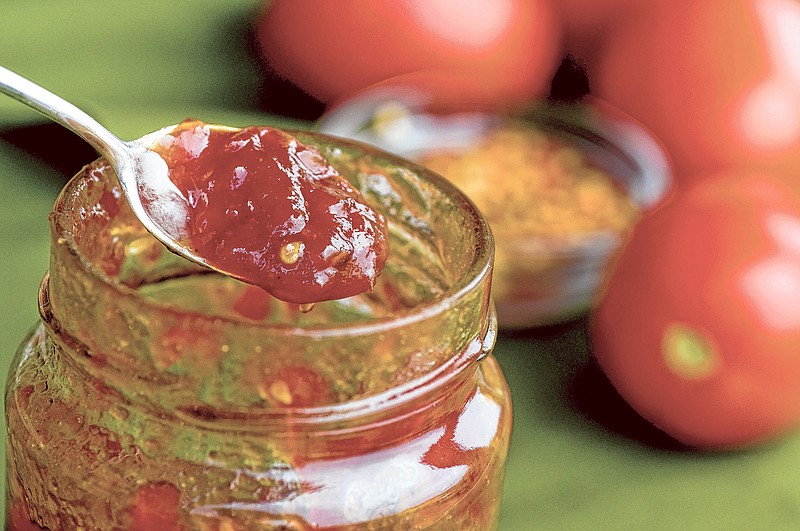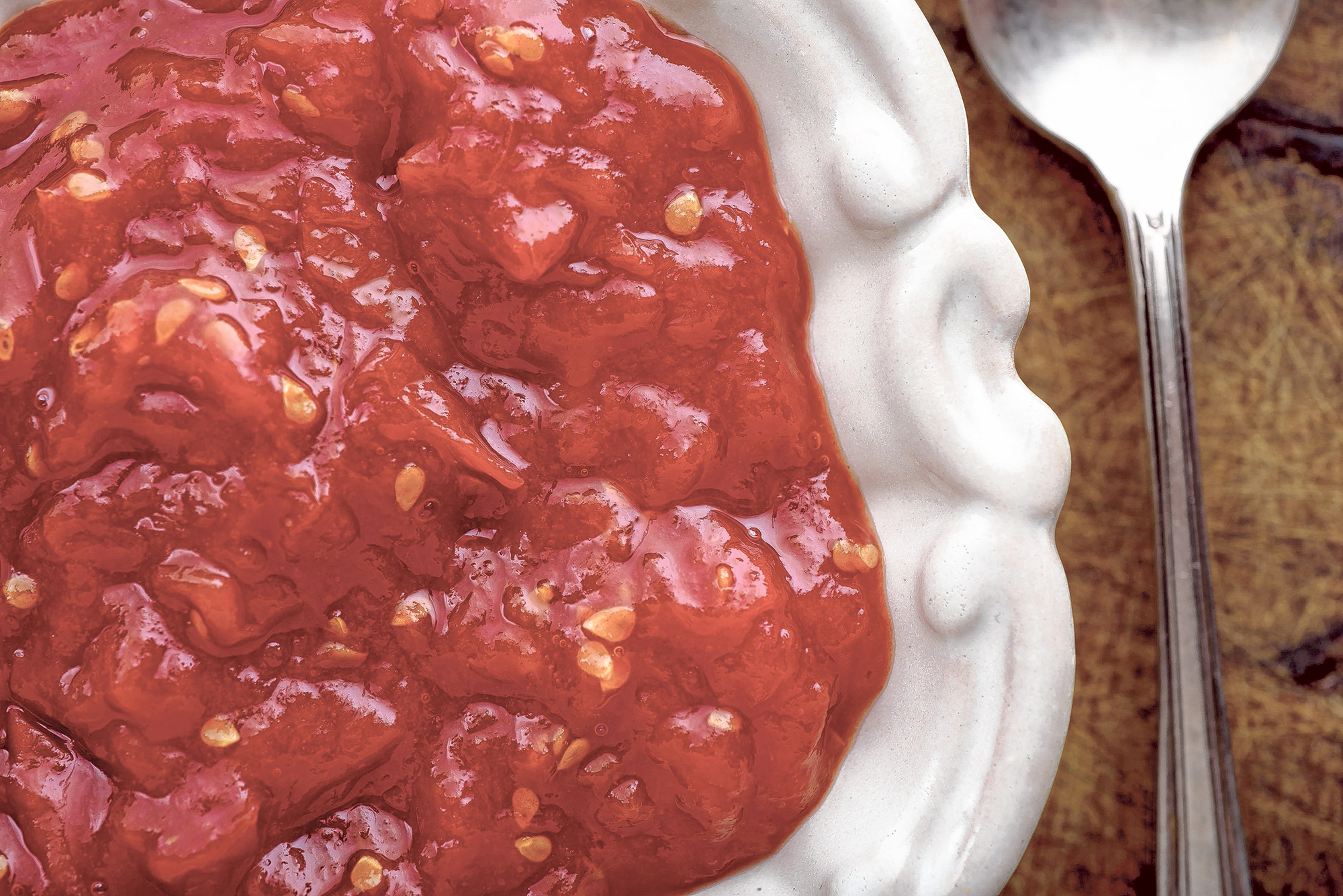A bumper crop of perfect strawberries. Irresistibly ripe peaches on sale. A blackberry bush bursting with fruit.
When a season is at its peak, it's tempting to make it last as long as possible. That's where preserving comes in - it keeps fresh fruit relevant well beyond its time.
Tomatoes, straight from the market, are a less obvious choice, but they produce a delicious, spreadable, not-too-sweet jam that gives ketchup a run for its money. Our recipe keeps the tomatoes planted firmly in the savory realm with the addition of garlic, herbs and dried chilies, for the ultimate salty-sweet toast topper.
It should go without saying that good jam starts with good fruit, and your final product will be only as tasty as your raw fruit. When making your selections, you'll want to consider the flavor, texture, sweetness and acidity of the fruit.
Nearly any kind of fruit can be used to make jam, but the best results come from juicy specimens with a good balance of sweet and tart and high amounts of naturally occurring pectin (the ingredient that creates that gelled, jammy texture). Resist the urge to use fruit so ripe that it's collapsing under the weight of its own juices: It might seem like an appealing choice, but it contains less pectin than fruit that's just about to hit peak ripeness, whether succulent peaches, early summer strawberries or just-picked apples.

Successful jam-making strikes a balance between the fruit and the sugar and acid that flavor it. The sugar not only thickens the jam, but it also enhances the flavor of the fruit. Stick to granulated, anywhere from a quarter of a cup (as in this tomato jam) to three-quarters of a cup per pound of fruit. If the jam needs a little help, because the fruit isn't sweet enough, or because it's too tart for your liking, add a bit more sugar, to taste; just make sure to do so at the beginning of the process. Jam-making is, after all, cooking and requires some seasoning adjustment from time to time.
For most jams, the addition of acid in the form of fresh lemon or lime juice is important for two reasons: First, it helps make a more well-balanced jam, returning some of the acidity lost with the addition of sugar. Second, pectin needs acid to properly activate, or firm up. Tomatoes don't need this step, though - they've got enough natural acidity to cut through that sugar all on their own.
Once the jam is cooked, you could can it, or simply put it in a clean jar and throw it in the refrigerator. And with that, summer is served.
Tomato Jam
4 pounds medium red or green tomatoes (do not use heirloom), cored and cut into 1-inch chunks
1 cup granulated sugar
1/2 teaspoon kosher salt
Garlic, chilies de árbol, red pepper flakes or thyme (optional, see note)
Toss tomatoes, sugar and salt together in a large, heavy-bottomed pot. Let sit at least 15 minutes or up to overnight, tossing to coat periodically to dissolve the sugar. (This helps coax the juices out of the tomatoes.)
Place a small plate in the refrigerator to chill. (You'll use this later.)
Bring tomatoes to a strong simmer over medium heat until the skins burst and the juices start to boil, about 10 minutes. Add in any of the optional ingredients (see note), if using.
Increase the heat to medium-high, and cook the jam. Using a wooden spoon or spatula, stir the jam, occasionally at first and more frequently as the juices thicken. Do this until most of the liquid has evaporated and the tomatoes have begun to break down and the mixture resembles a very thick, shiny tomato sauce, 35 to 45 minutes. This is the stage at which it's most important to stir constantly along the bottom of the pot to prevent scorching and sticking. (Sugar is heavier than water and will concentrate at the bottom of the pot, increasing the chance that the fruit will burn.) How much the tomatoes break down will depend on their type and how ripe they are: For example, firm green tomatoes are likely to remain chunky, while ripe red tomatoes will break down almost entirely.
To test for thickness, spoon a bit of jam onto the chilled plate, return it to the refrigerator and chill for 2 minutes. Drag your finger through it: It should hold its shape on either side without appearing watery or runny. If it's not there yet, continue to cook a few minutes more.
Remove from heat and discard the chilies de árbol, if using. Divide the jam between jars, leaving 1/4 inch of head space, and seal immediately.
Note: To add flavor to your tomato jam, add any or all of these ingredients in Step 3: 4 cloves garlic, chopped; 2 whole chilies de árbol or 1/2 teaspoon crushed red pepper flakes; or 1 tablespoon chopped thyme leaves.
Time: About 1 hour, plus macerating
Yield: 2 cups (about 2 8-ounce jars)

